Key takeaways:
- Filming location selection enhances the emotional narrative of the music, balancing aesthetic beauty with logistical practicality.
- Thorough research, including local insights and virtual tours, is essential to identify locations that fit both the visual and emotional needs of the project.
- The atmosphere and lighting of a location significantly influence the creative process and the overall impact of the film.
- Engaging with local culture can inspire unique creative ideas and enrich the narrative of the music video.
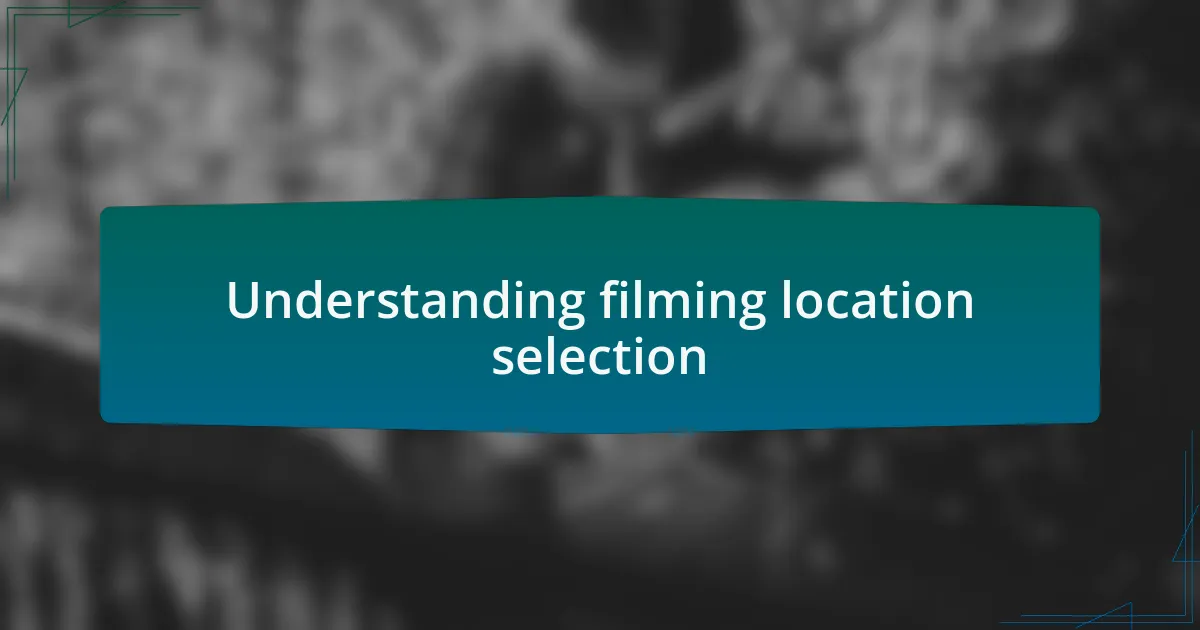
Understanding filming location selection
Selecting the right filming location is like setting the stage for a performance. I remember shooting a music video in an abandoned warehouse that had just the right amount of grit. The peeling paint and dim light added character and depth, transforming the atmosphere into something truly raw and compelling.
When I choose a location, I often consider how the setting can enhance the emotional narrative of the music. Have you ever listened to a song and felt transported to a different place? That’s the power of location. For instance, filming by the ocean for a reflective ballad created a sense of serenity that resonated with both the artist and the audience.
I also think about logistical aspects like accessibility. One time, I was eager to film in a stunning forest, but the long trek to set up created unnecessary stress. I learned that beauty in a location must balance with practicality; after all, a perfect shot shouldn’t come at the cost of a chaotic shoot.
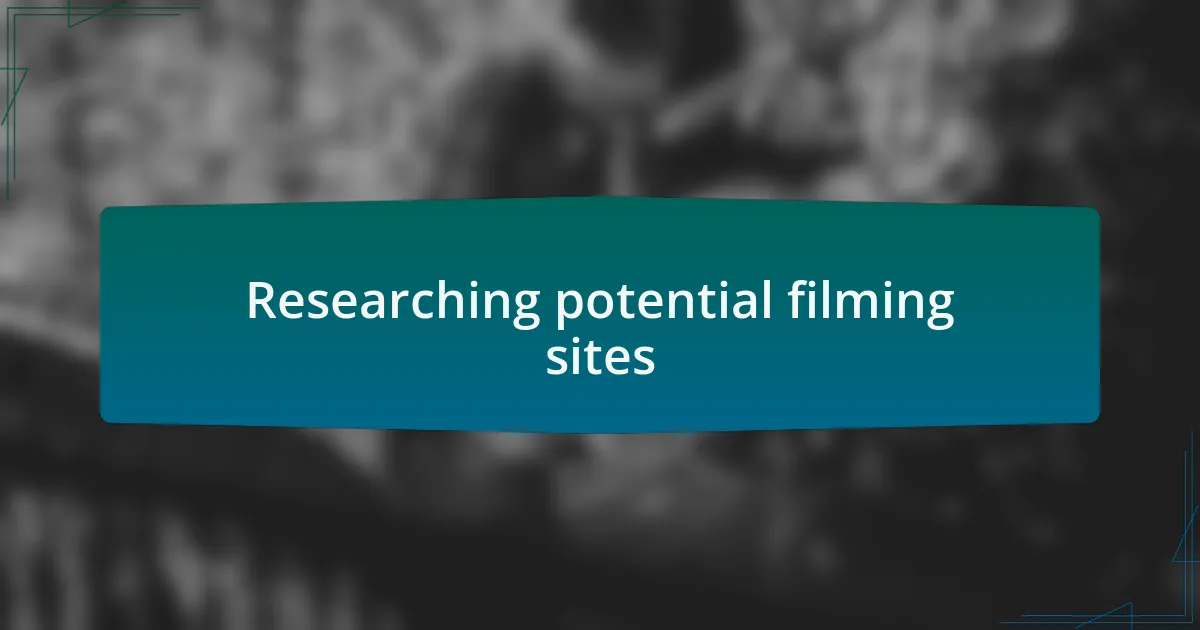
Researching potential filming sites
When I begin researching potential filming sites, I dive into every detail available online. Websites, local forums, and social media can provide a wealth of images and insights. For example, while scouting for a music video, I stumbled upon a hidden rooftop that overlooking the skyline. The vibrant graffiti and urban texture told a story that was perfect for the song’s rebellious spirit.
I often reach out to locals to gather their perspectives, which adds depth to my search. I remember chatting with a barista at a café near a picturesque park; she shared tales of sunset gatherings and intimate performances that helped me envision how to capture the essence of the space. Engaging with the community not only enriches my understanding of the location but often leads to unexpected gems that might not appear in a typical search.
Another valuable tool I rely on is virtual tours and maps. These allow me to visualize a location before even stepping foot there. I once used a virtual walkthrough of a historic theater, and while it looked promising, seeing it in 360 degrees revealed some layout challenges I hadn’t considered. This experience taught me that thorough research is critical; sometimes, what glimmers on the surface may not translate well to film.
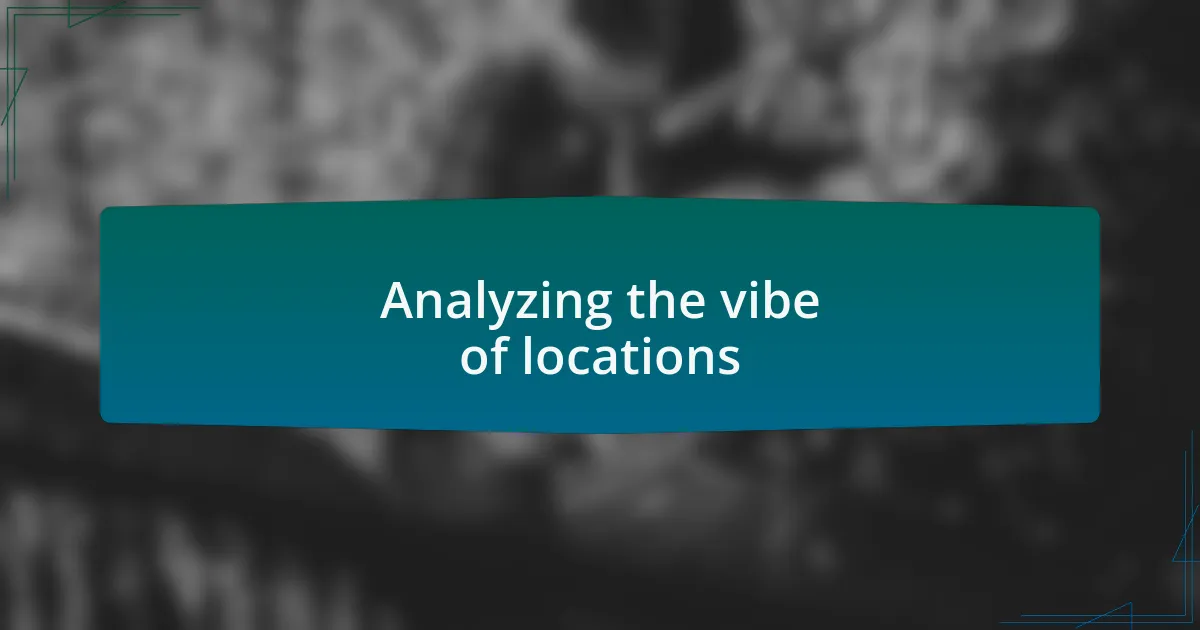
Analyzing the vibe of locations
When I visit a potential filming location, my focus goes beyond physical attributes; it’s all about the atmosphere. I remember filming a montage at a seaside pier one morning, where the salty air mingled with the sounds of laughter and waves. The lively energy there instantly inspired creative ideas for the shots, making me feel that the location was alive and brimming with stories waiting to be told.
As I analyze the vibe, I also consider the emotional resonance of a place. Take, for instance, an old train station I explored once; its faded grandeur evoked a sense of nostalgia that intertwined perfectly with the storyline of longing in my music video. I often ask myself, “Does this location evoke the feeling I want to communicate?” The answer shapes my creative choices significantly.
Lighting plays a pivotal role in the vibe, too. During a late afternoon shoot in a sun-drenched park, I noticed how the golden hour transformed the scenery. The dancing shadows added warmth and depth to each frame. Have you ever realized how sunlight can shift your mood? In that way, the vibe of a location can elevate a project beyond expectations.
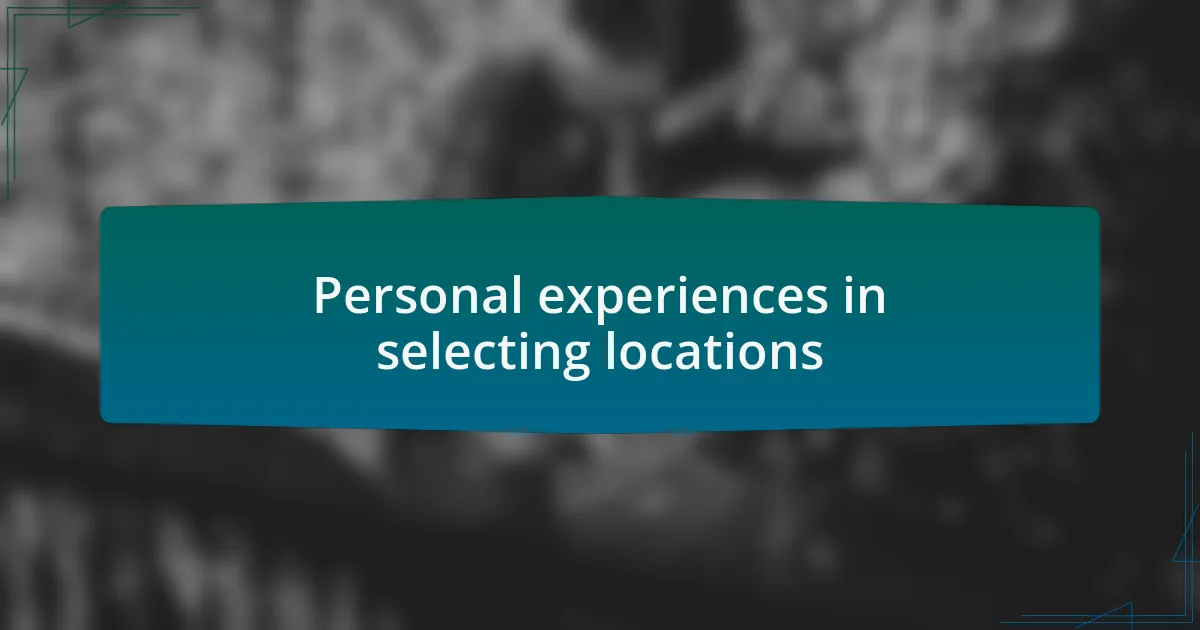
Personal experiences in selecting locations
One time, I decided to shoot a music video in an abandoned warehouse that had graffiti lining the walls. As soon as I stepped inside, the haunting echoes of my footsteps stirred something deep within me. I couldn’t help but think, “What stories have unfolded here?” That curiosity fueled my creativity, prompting me to embrace the raw, gritty aesthetic that perfectly matched the song’s theme of rebellion.
Another memorable experience was selecting a lush forest glade for a more introspective track. The dappled sunlight filtering through the leaves created a serene ambiance that resonated with the emotions I wanted to express. I vividly recall pausing to listen to the quiet rustling of leaves, feeling my heart align with the gentle rhythm of nature. Moments like these remind me that the selection of a location can either amplify or dilute the message of the music.
I find that the emotional connection I have to a location can shape not just the visuals, but the overall feel of the project. During a shoot in a bustling city square, I felt the pulse of the crowd sync with the beat of my song. It raised an intriguing question for me: “How do you capture the energy of a city while remaining true to your artistic vision?” Understanding that relationship is essential, guiding me in the decisions I make during filming.
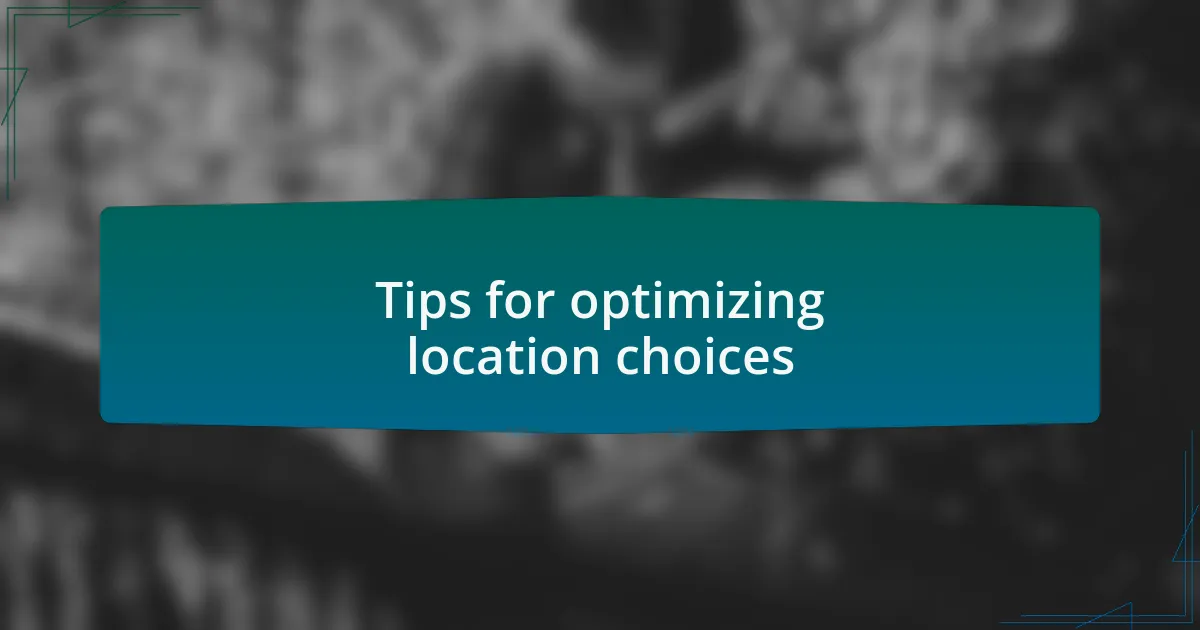
Tips for optimizing location choices
When selecting locations, I often consider the practical aspects, such as accessibility and logistics. I recall an instance where I chose a spot by a bustling beach for a summer anthem. While it offered stunning visuals, managing equipment and coordinating with local crowds became a challenge. That experience prompted me to think: How can the beauty of a location enhance the production process without creating unnecessary hurdles?
I also trust my instincts when it comes to the mood of a place. For example, I once filmed in a cozy café that felt almost like a secret hideaway. The warm lighting and intimate atmosphere perfectly matched the song’s theme of longing and nostalgia. Reflecting on that moment, I realize how essential it is to align the emotional essence of the location with the music; it’s all about finding that harmony.
Engaging with the local culture can provide unexpected inspiration. During a shoot in a historic town, I found myself captivated by the unique architecture and the stories woven into every corner. It sparked a creative idea to incorporate local art into the visuals, enriching the narrative of my song. This makes me wonder: how can we blend our artistic vision with the authenticity of the places we choose?